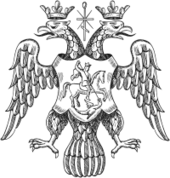
Decades ago, as Feng Shui swept through the United States from China; many misinterpretations were swept along with it. This homogenized version of Feng Shui has somehow adapted mixtures of superstition and folklore, none of which have anything to do with living in balance or harmony, a central principle of Feng Shui. Unfortunately, these superstitions have found quite an audience because they promise quick and simple results.
However, when I studied Feng Shui in Tibet and China I quickly learned how deep superstitions were embedded in Chinese culture as well. For example not only did airlines and airports routinely skip a 4th isle or 4th gate, but more than 90% of high-rise buildings all over the country lack a 4th floor. You won’t find a room number four, a license plate that ends in four, or a phone number or home address that ends in the number four. This number is considered unlucky because it sounds a lot like the Chinese word for death.
In the United States, we have developed our own irrational superstitious beliefs: the number 13 is bad luck; we “knock on wood” to ward off bad luck; if we break a mirror we have seven years of bad luck; walking under a ladder is bad luck but if you find a penny and pick it up, “all the day long you’ll have good luck.”
Unlike superstition, symbolism has the power to bring the mind and the heart together and connect us to the deepest truths of life, and that is why I use the language of symbolism in my Feng Shui practice.
Symbolism is the idea that things represent other things. Let’s look at the color red – in Feng Shui red isn’t just the color itself, but something beyond it: passion, love, or devotion. To others, it might represent blood or it could mean stop. In other words, red can mean anything you want it to mean. In other words, it means everything. Or, it means nothing, because you can assign any kind of symbolic interpretation to it, with no special quality.
 Symbols and symbolism were created as a way to comprehend something, and over 8,000 years ago, a double-headed eagle motif was the oldest symbol known to humans. It was symbolic of the foundation of a city.
Symbols and symbolism were created as a way to comprehend something, and over 8,000 years ago, a double-headed eagle motif was the oldest symbol known to humans. It was symbolic of the foundation of a city.
It is symbolism that is the basis of thinking, and the major difference between human beings and other life forms on Earth (at least, so far as we know. Who can tell what a whale or a dolphin does to store impressions, or what great, slow thoughts a sequoia indulges in while living through the centuries). Humans not only manipulate symbols but create symbols as well.
Symbolism is an interactive practice, requiring the discernment of humans to flesh out meanings according to his/her own perspective at the time of interpretation. Superstition asks no such thing of us.
The choice is yours, you can go the quick-and-easy route, the route requiring little to no effort on your part – a pat answer typically based upon fear-driven concepts, then let superstitions be your guide.
If, however, you find yourself to be more refined, more evolved, and so require a sophisticated approach to interpreting uncommon events in your life – an approach that encourages expanded perception, open-mindedness, and soulful sensitivity – then symbolism is the right choice.
| Symbolism | Superstition |
| Relies heavily on logic | Feeds on ignorance |
| Encourages independent and critical thinking | Encourages no thought, blind acceptance |
| Encourages anthropological/cultural research for greater understanding | Requires no understanding or research, concepts taken at face-value |
| Requires interpretation and exploration from the observer | Must be accepted as truth or fact without substantiation |
| Offers insight according to the observer’s needs | The meaning is never changes |
| Lends itself to the improvement of the human condition | Perpetuates fear |
Have any Feng Shui questions? Feel free to contact me at michelle@michellecromer.com and sign up for your Power Color or visit me on Facebook at Michelle Cromer Feng Shui.

Leave a Reply